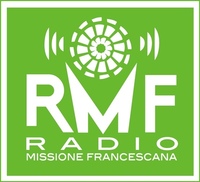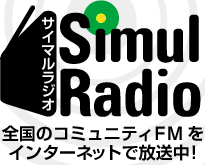Lace Pillow
| A lace pillow is somewhere to pin a pattern on, stick pins into, and lie bobbins on. While it's called a pillow, don't think of something soft and squashy! It is hard because this will hold the pins steady. Pillows can be be stuffed, or nowadays can be made of expanded polystyrene. These are called cookie pillow from the shape, which is flat underneath and domed on top. The pillow on the right shows one of these with a pattern on it ready for the bobbins. It has a piece of felt and a blue cover on top to protect it. These pillows are cheap and effective. They are light, and can take a reasonable size of lace, with all the bobbins that such lace needs. |  |
 | My other lace pillow on the left, which is stuffed, is useful for strips of lace. Here the pattern in pinned on a small roller at the top. The bobbins hang down onto the main pillow, but all the pins are in the roller. When you have finished an inch or so of lace, you turn the roller back a little to expose more pattern. The pattern can got right round the roller, so you can make as long a piece of lace as you like, by going over the pattern several times. The finished lace hangs down the back of the pillow. You can see the pillow with some lace being worked. There is a solid mass of pins on the paper, and the threads are leading to them. This pillow has a flat bottom. Its framework is wood, so it is quite heavy. |
| A bolster pillow is a small cylinder, stuffed hard, with the pattern pinned right round the pillow. You turn the whole pillow as you make some lace and want more pattern. This was used in England in the past, but I don't know if many modern lacemakers use it. They used to have a special cradle to hold the pillow, to stop it rolling away. I did try making some lace on this pillow which someone gave me. I found it hard, as the bobbins kept rolling into each other, whereas on a flater pillow, they lie still. But no doubt one would get used to it in time. Another interesting point is which way round do you use the pillow? It seems obvious that you wrap the pattern right round the pillow and hold it across your lap or the cradle. Other photos show this. But I have seen very thin, long pillows where the pattern was pinned across the pillow (which would mean that there was a limit to how long the pattern could be) and the lace was worked with the pillow almost pointing into the air, with one end on the lap. Very strange! |  |
 | You can make a lace pillow. Take a square piece of board - something stiff and light, such as plywood. Make a cover out of strong material slightly bigger than the board, with one side open. Put the board in, and sew up most of the remaining side. Now stuff the pillow as hard as you can! In the past they used straw, but any stuffing that will take a pin stuck in and keep it steady will do. Finally sew up the hole. My attempt is on the left. I gave it up eventually because the stuffing wasn't quite even all over, so there was a soft patch in it - very annoying when you came across it! |
| My first pillow was a piece of expanded polystyrene which had been used for packing, cut to shape and covered with material. It was far too small to do much, but it did get me started. I still use it for pricking patterns. |  |
Bobbins
 | The bobbins are the most expensive part of your equipment, but they will last your lifetime, and will probably be sold in antique shops for future lacemakers or collectors! One bobbin need not cost much. A good quality bobbin will be a few pounds and you can get plastic ones for much less. However, the simplest lace pattern uses a LOT of bobbins. My simplest pattern uses 6 pairs (12 bobbins), and the rest of the beginner patterns use up to 14 pairs (28 bobbins). Most of my patterns need between 15 pairs and 25 pairs (30 to 50 bobbins). Some patterns (not mine) use 50 pairs or more - that's more than a hundred bobbins! It would be best not to get a full set right away. Get enough to do a pattern, then gradually build up your collection. It will look like a real lacemaker's pillow if it has bobbins of all different makes and types, with different memories attached. Mine remind me of where I got them or who gave them to me. However, you don't even need real bobbins. There is nothing special about a bobbin. It is a stick about 4 inches (10 cm) long which you wind thread round to store while you are making the lace. You need to have a groove at the top to stop the slip-knot holding the thread sliding off, but apart from that, you could use pieces of wood dowel from the DIY shop. This was how I started, with the grooves hacked in with a pen-knife (see right). However, as you make lace, you will want bobbins that you can be proud of, and like handling. The photo on the left shows a black plastic bobbin, a bone bobbin bought on holiday and a lovely wooden bobbin given by a friend. |  |
 | English bobbins often have beads on. These are called spangles. When you buy a new bobbin, it may not have these - there will merely be a small hole at the bottom. You buy your own beads and some thin wire (see left), and thread the beads on, snipping the wire and twisting it to keep the beads on. The spangles are not essential. They help the bobbin to lie still on the pillow and not roll, and they help you keep track of individual bobbins, but the real reason for them is that they look attractive! Since lace bobbins are worked in pairs, many people make the spangles the same for a pair. If the lace doesn't have any half stitch, you can check the pairs while working the lace. However, many patterns split the pairs up, so don't count on it too much! |
| The spangled bobbins really belong to East Midland lace, such as English Maltese. Some types of lace, such as Honiton, use very thin bobbins without spangles. This is because they have many bobbins and very fine thread, so the beads would get in the way. There are also quite thick, unspangled bobbins which are used for other types of lace. See left for examples of these types. It's probably not a good idea to use bobbins of different weights on the same piece of lace. The weight of the bobbin tends to drag on the thread, giving a natural tension to the lace. If the bobbins are different weights then the this tension will vary, which might make it harder to work the lace evenly. |  |
 | You can buy bobbins at lace suppliers (who often have websites), at lace fairs, in some handicraft shops, and if you're lucky, even at antique shops and fairs. Bobbins last for ever, and it's lovely to use a few Victorian bobbins among your other bobbins while making your own lace (see left). You can get beads and wire for spangles in many places. Some suppliers will put spangles on new bobbins for you. Antique bobbins often have interesting old beads on them. Bobbins are usually made of wood, since it's light, easy to work and looks and feels nice. Plastic is cheap, perfectly adequate but not so pretty to look at or use. You can get bobbins of bone. Don't worry about ivory - even antique white bobbins are made of bone instead. Apparently the first lacemakers used complete small bones as bobbins, and it was known as bone lace. |
 | Pricking paper or cardA lace pattern is pricked out on paper. It must be stiff enough to allow a pin to stick into it. They used to use parchment or card (see left). I must admit that I use ordinary paper, and I have never had any problems. This means that I can print a pattern off from the computer and use it! So my patterns have colour on to help me, which a normal lace pattern wouldn't have. You need to prick the pattern on the paper. You can buy a special lace pricker (see right), but you can also use an ordinary needle. |  |
 | PinsPins are not a problem. Buy them from any sewing shop. You need thin pins, without a big head, and you need quite a lot. They last, of course, but I tend to drop them on the floor and lose them. In the past, pins were very expensive, and used to rust. Sometimes lacemakers even used thorns. |
Thread
| You can make lace with any type of thread that won't break or stretch. In the past, they used silk or linen. Now, cotton is used, and I must admit that I have used the cheapest type of polyester thread. You don't use much thread, and so you can use quite exotic materials, but you don't have to. To start with, try any type of ordinary sewing thread, and when you're more confident, you can experiment with other threads. I've made fun pieces of lace with sparkly thread made from some sort of plastic. You will need to consider how thick the thread is, and many lace patterns specify a particular type of thread. This is just to get a particular effect. If you use a thinner thread, your lace will look looser, and a thicker thread will make a tauter lace. It's fun to experiment with different thicknesses of thread and see the effects. Once I made some lace with thread far too thin for the pattern size, and a friend admired its 'delicacy'. It was practically falling apart! The traditional colours for lace was white, and perhaps black. Old lace often looks cream-coloured, so cream is a good way to make antique-looking lace. However, with all the rainbow of colours available in modern thread, there is no reason to restrict yourself. Use whatever you want. You can also experiment with using more than one colour. This needs a certain amount of thought. Some of the patterns of the rest of my website give some ideas. |  |
 | Other equipmentA pair of scissors would be sensible, for cutting the threads when winding bobbins, and after finishing the lace. |
| A couple of large pins can help you keep your bobbins under control. Sometimes you need to tidy away bobbins not in immediate use, and a large pin can help to pin the threads to one side. Some people use old hat pins, or you can buy special pins from some suppliers. These pins tend to be too thick to use as prickers. |  |
You might need some way of keeping all your lacemaking equipment together. I must admit that I have kept my bobbins in a small plastic bag, and everything in a large plastic bag! There are more aesthetically pleasing solutions, of course. You could make hussifs for both bobbins and the rest of the equipment. A hussif is a strip of cloth with pockets which you roll up and tie with a string or ribbon.
Some people may need a stand to put their pillow on. I don't find it necessary myself; I just sit in quite a low chair (so my lap is sloping towards me rather than away) and keep the pillow on my lap. Some people have the pillow on a table. If you want the pillow to slope towards you, then try wedging something under the back of the pillow.






























































































































%201861%20-%201907.jpg)








.jpg)















































.jpg)





































































































No comments:
Post a Comment